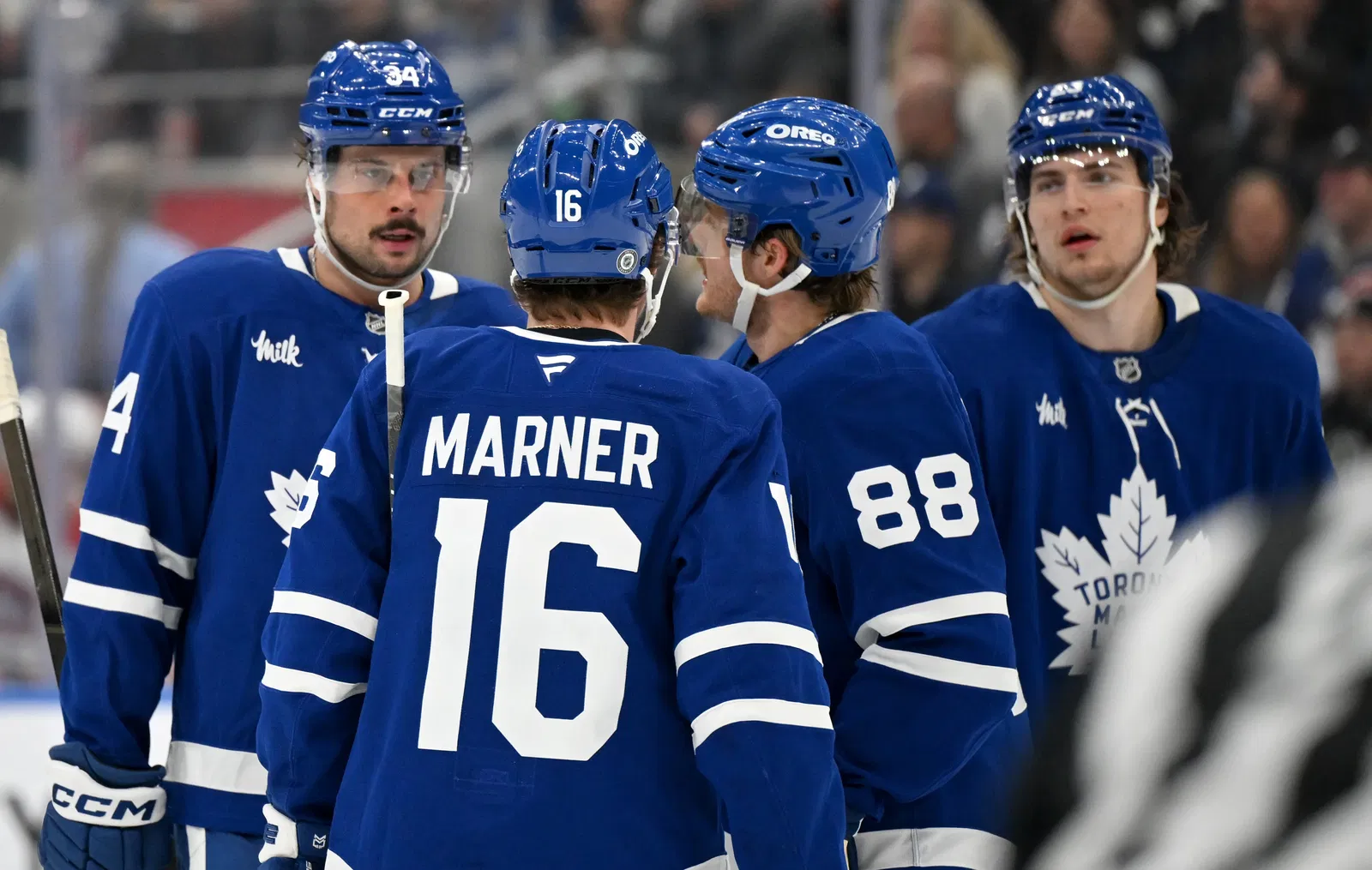
When Mitch Marner arrived in the Toronto Maple Leafs organization as a tantalizing prospect 10 years ago, there were a lot of unknowns.
Would his small frame fit at the NHL level? Would his playmaking ability translate to a faster and stronger game? Both of those were massive uncertainties, but Toronto and its fans hoped the young forward — who grew up idolizing the Maple Leafs — would pan out and bring playoff success back to the city.
If you had a crystal ball back at that juncture, you’d likely glimpse into the future with plenty of excitement. Ten years after standing between Mark Hunter and Kyle Dubas on the draft stage, draped in blue and white, Marner has written himself into Toronto’s history books.
Fifth on the franchise’s points list (741 points in 657 games). Fourth on the club’s assists list (520). Fifth in the team’s all-time playoff points list (63 points in 70 postseason games). If you don’t know much about the Maple Leafs, you’d say that’s a strong resume for a jersey retirement down the road.
Others, however, who’ve watched Toronto’s playoff hopes swirl throughout the last nine years might disagree.
Marner has two goals and 10 assists in 16 games when facing elimination. Six assists in 16 series-clinching games. Six game sevens, all losses. It’s a statline that makes you tilt your head in disbelief, especially when you look at his regular-season success.
Though it’s not just Marner who’s struggled in games where everything is on the line.
Auston Matthews has nine points in 13 elimination games, 10 points (five goals and five assists) in 16 potential series-clinching games. He, like Marner and William Nylander, has played six game sevens and hasn’t won any of them either.
Nylander, however, has been the most productive, scoring 14 points in 16 potential series-clinching games. He’s also tallied eight goals and three assists for 11 points in 16 elimination games. Nylander is the top producer among the three homegrown talents by the Maple Leafs in key games.
And that’s why Marner, who is set to peek through the open door of free agency on July 1, shouldn’t look back when he walks out of it.
This current build of the Maple Leafs doesn’t work. This core of players, along with John Tavares, who joined partway through Toronto’s quest for glory, hasn’t been able to get it done when it matters most.
Look at a team like the Florida Panthers. They just won back-to-back Stanley Cups. The best version of the team yet — that dominated the Connor McDavid and Leon Draisaitl-led Edmonton Oilers, sending them home in six games — had 72 points from their bottom-six forwards, 200 points overall from their forward corps.
That’s 36 percent of Florida’s production from their depth up front, not to mention the other 51 points from the defensemen, which, if you put that together with the depth, makes up just under half of the team’s points in the playoffs.
Let’s put this into perspective, too: the Panthers’ third line of Eetu Luostarinen, Anton Lundell, and Brad Marchand played the most minutes (210:04) at five-on-five for Florida, nearly 60 more minutes than their top line of Carter Verhaeghe, Aleksander Barkov, and Sam Reinhart (149:43), according to NaturalStatTrick.com.
Toronto’s number one line of Matthew Knies, Matthews, and Marner played 145:04 at five-on-five in the playoffs, while the fourth line of Steven Lorentz, Scott Laughton, and Calle Jarnkrok played the second-most at 99:22.
The key difference between the Maple Leafs’ fourth line and the Panthers’ third line? Florida’s third line combined for 34 points in the first two rounds. Toronto’s fourth line had five assists.
Ultimately, the Maple Leafs need to surround their top players with depth that can produce. If they don’t, the imaginary flame that burns while Toronto is in the playoffs will go out quite quickly, like this year, and those that have passed.
After shedding Marner’s massive cap hit when free agency begins, Toronto will be able to hit the refresh button and potentially upgrade its depth.
There’s the re-signing of Tavares and Matthew Knies, which could get done before July 1, and that should take up — if the reports on those negotiations are correct — around $12-$13 million of Toronto’s $25.7 million in cap space they’re entering the offseason with, according to PuckPedia.
That could leave Maple Leafs GM Brad Treliving with $12 million to play with. If you account for the Max Pacioretty signing that reportedly could come, plus the potential of Lorentz re-signing, Treliving could have a bit less than $12 million to spread.
It very well could be more if Toronto ships out some contracts which aren’t living up to their potential.
It’s been reported that the Maple Leafs could be in on Marchand if he hits free agency on July 1. The 37-year-old will command a pretty penny after the run he had with the Panthers in the playoffs this year.
Would it be worth signing him at $8 million per year, or more, if Toronto wants to spread out their depth? It would certainly make things a little tricky, especially if the move after signing Marchand is to put him in your top-six.
He’s a strong player, of course, but maybe you try and fit him in your bottom-six somewhere? It’s crowded currently, with the likes of Max Domi, David Kampf, Bobby McMann, Jarnkrok, Laughton, and even more jammed if Pacioretty and Lorentz return.
But if you can ship out a player or two whose contract isn’t providing value, adding Marchand makes sense. Even aside from the veteran forward, there’s a lot to like in free agency when it comes to depth, with the likes of Patrick Kane, Reilly Smith, and a few others hitting the open market.
It might not be a "big fish" summer for Toronto, as it might be for other teams who are chasing Marner. It could, however, be the offseason of "smaller, but more important fish" if the Maple Leafs play their cards right.
And that starts with holding the door for Marner as he walks out the door to new beginnings on July 1.

-1753149846-q80.webp)

-1752808560-q80.webp)